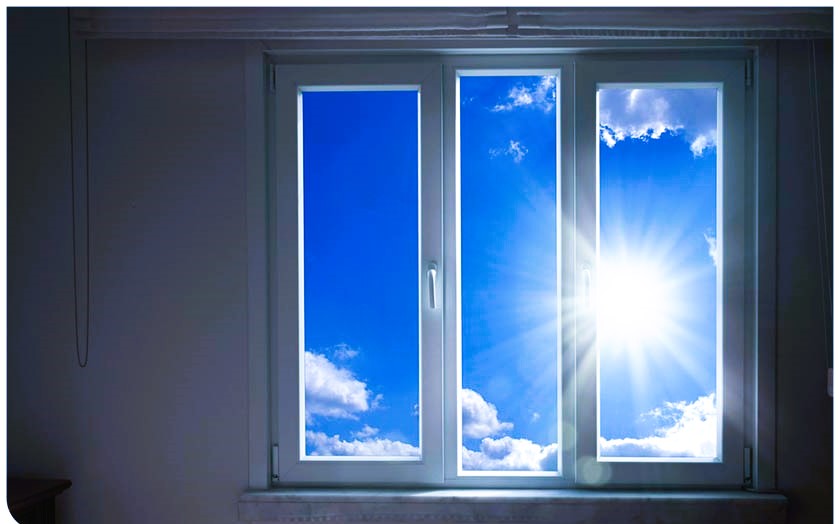Window orientation is a crucial aspect of building design that significantly impacts the amount of solar heat gain a space receives. By strategically positioning windows and understanding how sunlight interacts with different orientations, homeowners in Calgary can maximize natural heating, reduce reliance on artificial heating systems, and improve energy efficiency. In this article, we will explore the importance of window orientation in capturing solar heat gain and provide valuable insights on maximizing natural heating in your home.
- Understanding Solar Heat Gain
Solar heat gain refers to the process of harnessing solar energy to heat the interior of a building. It relies on the orientation and size of windows, as well as the solar radiation that enters the space. Proper window orientation allows for optimal solar heat gain during colder months, reducing the need for artificial heating and promoting energy efficiency.
- Ideal Window Orientations
In Calgary’s climate, where winters are cold and summers are relatively warm, south-facing windows are the most advantageous for solar heat gain. South-facing windows receive the most sunlight throughout the day, maximizing the potential for natural heating. East-facing windows receive morning sunlight, while west-facing windows receive afternoon sunlight. These orientations can also contribute to solar heat gain but may require additional shading to prevent overheating during summer months.

- Considerations for Window Placement
When designing or renovating a home to maximize solar heat gain, consider the following:
- Assess the site: Evaluate the specific location of your home to determine the sun’s path throughout the day. Observe any potential obstructions such as nearby buildings, trees, or geographical features that may cast shadows on windows and limit solar heat gain.
- Window-to-wall ratio: Find the right balance between window size and wall insulation. While larger windows allow for more solar heat gain, they can also increase heat loss during colder periods. Proper insulation, such as double or triple glazing, can mitigate this issue. Renewable energy sources, what is it, read more here.
- Overhangs and shading: Incorporate overhangs, awnings, or shading devices to prevent excessive solar heat gain during summer months. These elements can help block direct sunlight when it is not desired, while still allowing for solar heat gain during winter months.
- Benefits of Solar Heat Gain
Optimizing solar heat gain through window orientation offers several benefits:
- Energy efficiency: By maximizing natural heating, homeowners can reduce their reliance on artificial heating systems and lower energy consumption. This leads to cost savings and a reduced environmental impact.
- Improved comfort: Solar heat gain not only warms the space but also provides radiant heat, which can create a more comfortable and cozy environment. Properly designed window orientations contribute to more balanced indoor temperatures.
- Daylighting: Strategic window placement for solar heat gain also enhances natural daylighting. Ample natural light can positively impact occupants’ well-being, productivity, and overall comfort.
To learn more about energy efficiency standards and regulations in Canada, you can refer to the official websites of the Government of Canada: Wikipedia – Energy Efficiency in Canada.
- Passive Solar Design Strategies

Maximizing solar heat gain goes hand in hand with passive solar design strategies. Some additional considerations to enhance natural heating include:
- Thermal mass: Incorporate materials with high thermal mass, such as concrete or stone, near south-facing windows. These materials can absorb and store heat during the day, releasing it slowly at night to provide consistent warmth.
- Insulation: Ensure proper insulation of walls, roofs, and floors to minimize heat loss and optimize the efficiency of solar heat gain.
- Air sealing: Seal any gaps or cracks around windows to prevent drafts and heat loss. Proper air sealing helps maintain a morecomfortable indoor environment and maximizes the effectiveness of solar heat gain.
- Window treatments: Use window treatments such as blinds, curtains, or insulated shades to control solar heat gain. These can be adjusted to allow sunlight in during winter months and block excessive heat during summer months.
- Monitoring and optimization: Consider using smart home technologies, such as smart thermostats or automated shading systems, to monitor and optimize solar heat gain based on real-time conditions. These systems can adjust window treatments or heating settings to maximize energy efficiency and comfort.
Incorporating these passive solar design strategies and understanding the importance of window orientation in capturing solar heat gain can significantly enhance the energy efficiency and comfort of your home in Calgary.
